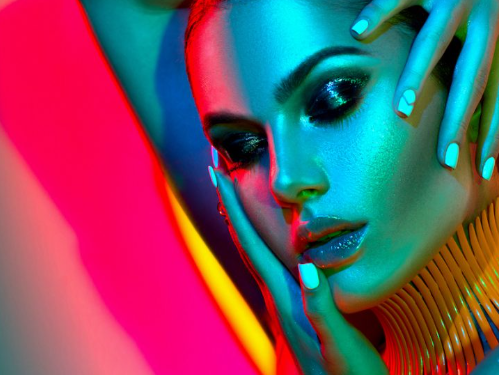Did you know that colors aren’t just visual elements, but also powerful tools of communication? They can signal action, influence moods, and trigger physiological reactions.
In this blog post, let’s explore the fascinating world of color psychology and how it affects our daily lives.
Red: Evoke Excitement with Caution
Use red sparingly as it is a powerful color that can evoke excitement and prompt quick decision-making. Reserve it for specific phrases or points you want to emphasize, but be mindful of moderation to avoid coming across as aggressive or authoritative and turning off potential clients.
Blue: Convey Trust and Calmness
Blue is often used by brands to convey loyalty, trust, calmness, and safety. However, it may not be a good choice for food-related presentations, as it can make people feel less hungry.
Yellow: Grab Attention Intensely
Yellow is the most intense color in the visible spectrum, making it the most noticeable to the human eye. It’s great for grabbing attention, but too much can be overwhelming. Use yellow sparingly in presentations to highlight important information.
Green: Symbol of Life and Harmony
Green represents life and symbolizes harmony, stability, and balance. It’s a great choice for a presentation as it stimulates interaction, encourages participation, and signifies the environment, growth, renewal, and health.
Violet: Inspire Creativity and Uplift
Violet inspires creativity, calms nerves, and uplifts. It’s perfect for presentations that aim to convey exclusivity, luxury, and class.
Orange: Encourage Innovation and Enthusiasm
Use orange in your presentation to encourage people to accept or try something new. It’s associated with creativity and enthusiasm, making it great for energizing your team.
Pink: Soothing and Feminine
Pink has a soothing effect and represents femininity. It’s commonly used in industries such as beauty, fashion, and confectionary to convey a message of hope and compassion.
Gray: Neutral Elegance in Moderation
Gray is neutral and lacks psychological attributes when used alone. It can induce feelings of depression and introversion, but combined with other colors, it can enhance a presentation.
Black: Conveying Sophistication and Fresh Starts
Black is considered a menacing color due to its absence of light, but it can be effective in presentations, conveying sophistication and a feeling of starting fresh.
White: Balancing Positivity
White reflects light and can strain the eyes if not used correctly. When balanced with other colors, it’s a good choice for presenting a positive message.
Brown: Earthy and Subdued
Brown exudes solemnity in a warm and subdued way. It’s associated with nature and the Earth, making it suitable for conveying messages of honesty, stability, healing, and home.
By understanding the power of color psychology, you can use it to your advantage in various aspects of your life, from marketing to personal relationships.
FAQ
How does color psychology impact decision-making in marketing?
Color psychology plays a significant role in marketing by influencing consumer emotions and perceptions. Certain colors can evoke specific responses, affecting purchase decisions and brand perception. Understanding these nuances allows marketers to strategically use colors to connect with their target audience.
How can I strike the right balance when combining multiple colors in design?
Achieving a balanced color palette involves considering factors like contrast, harmony, and the emotions each color conveys. Experiment with color combinations, pay attention to color theory principles, and use tools like color wheels to create visually appealing and balanced designs.

